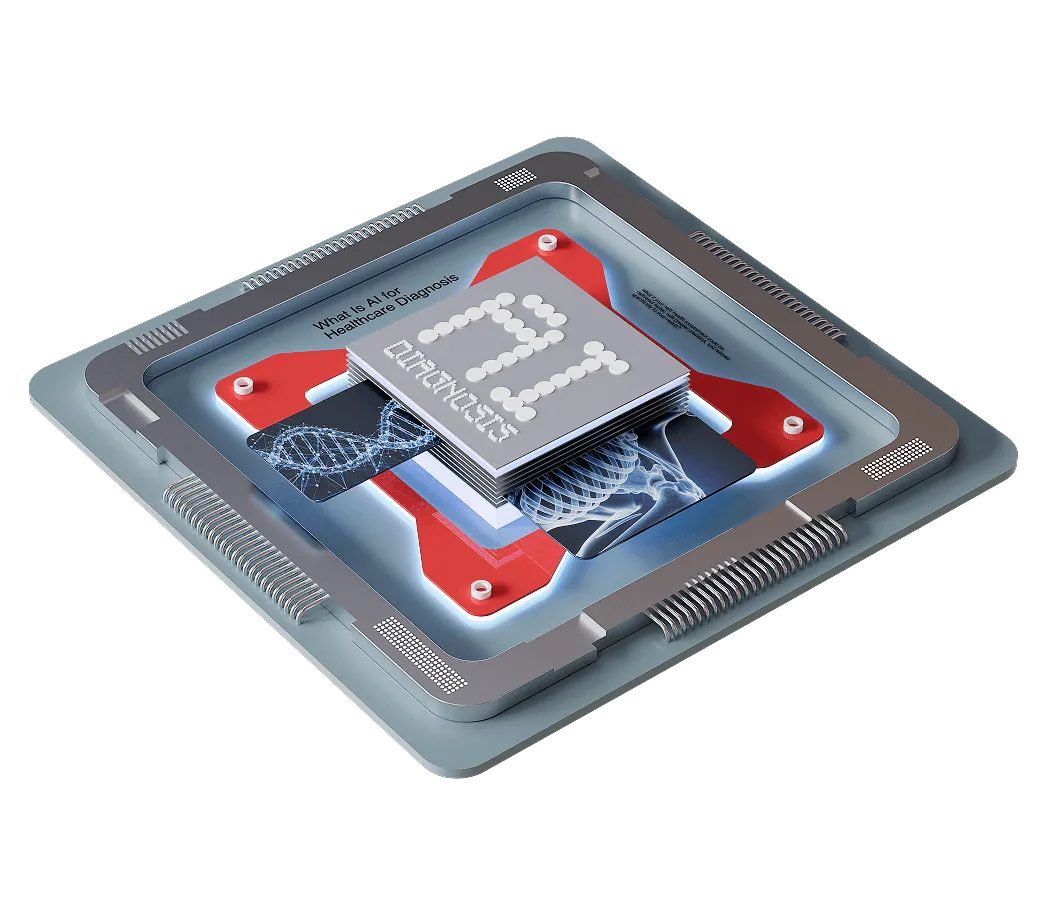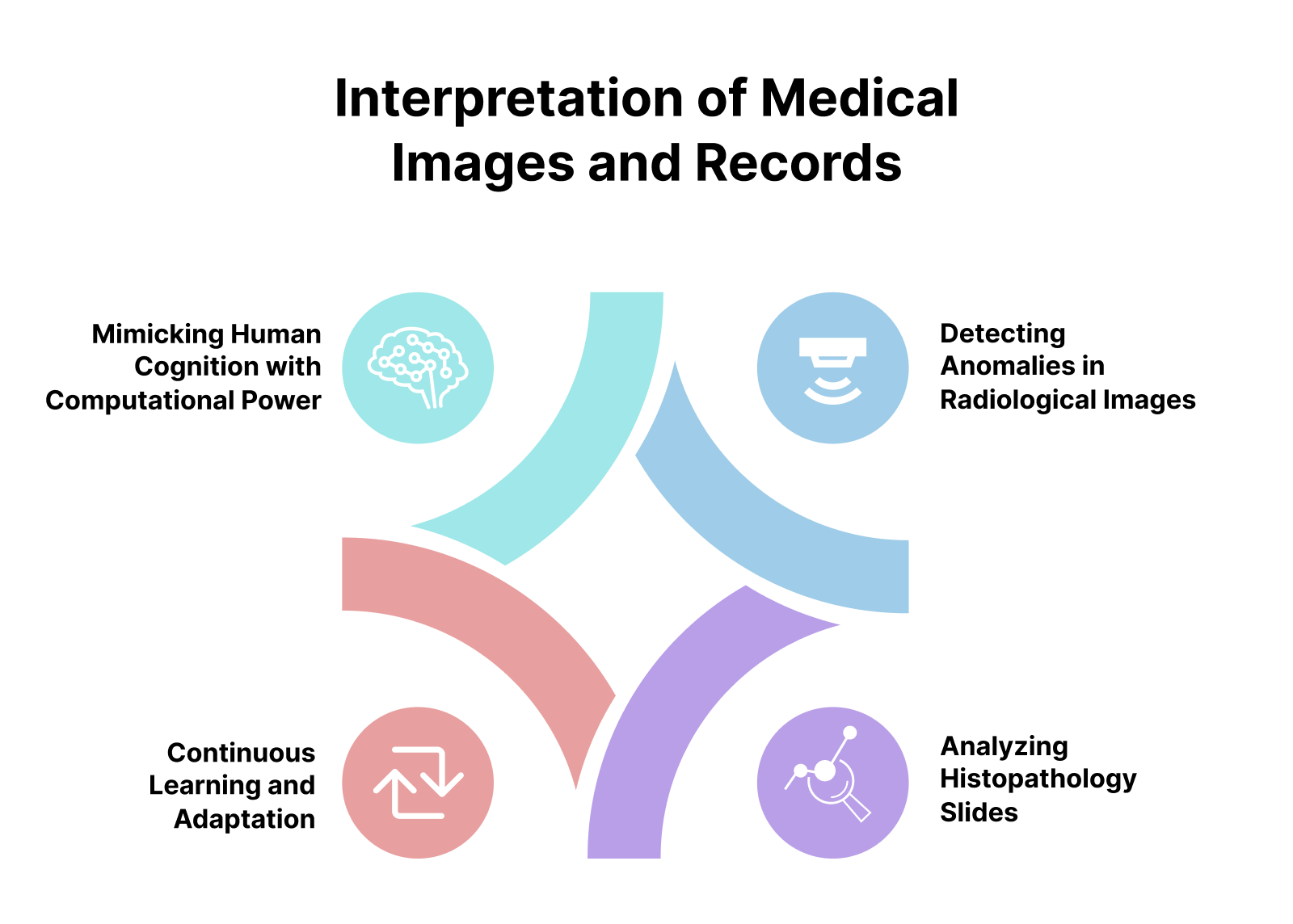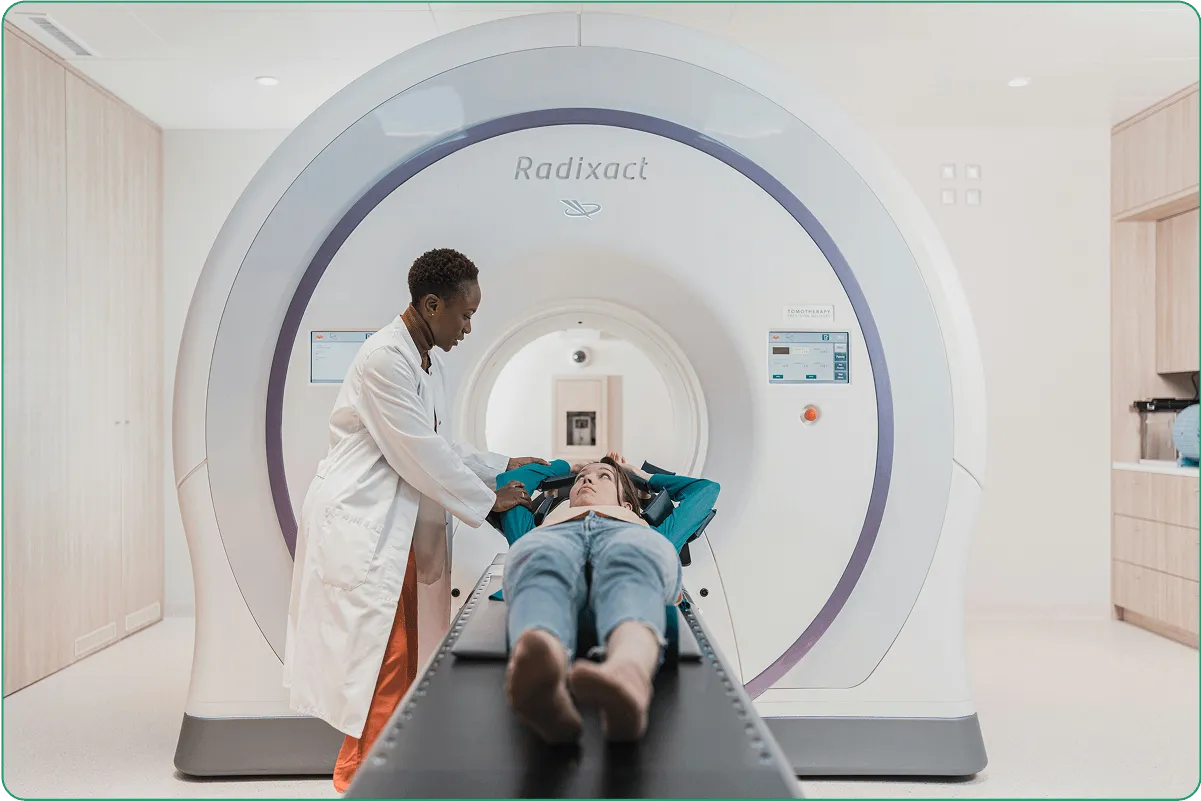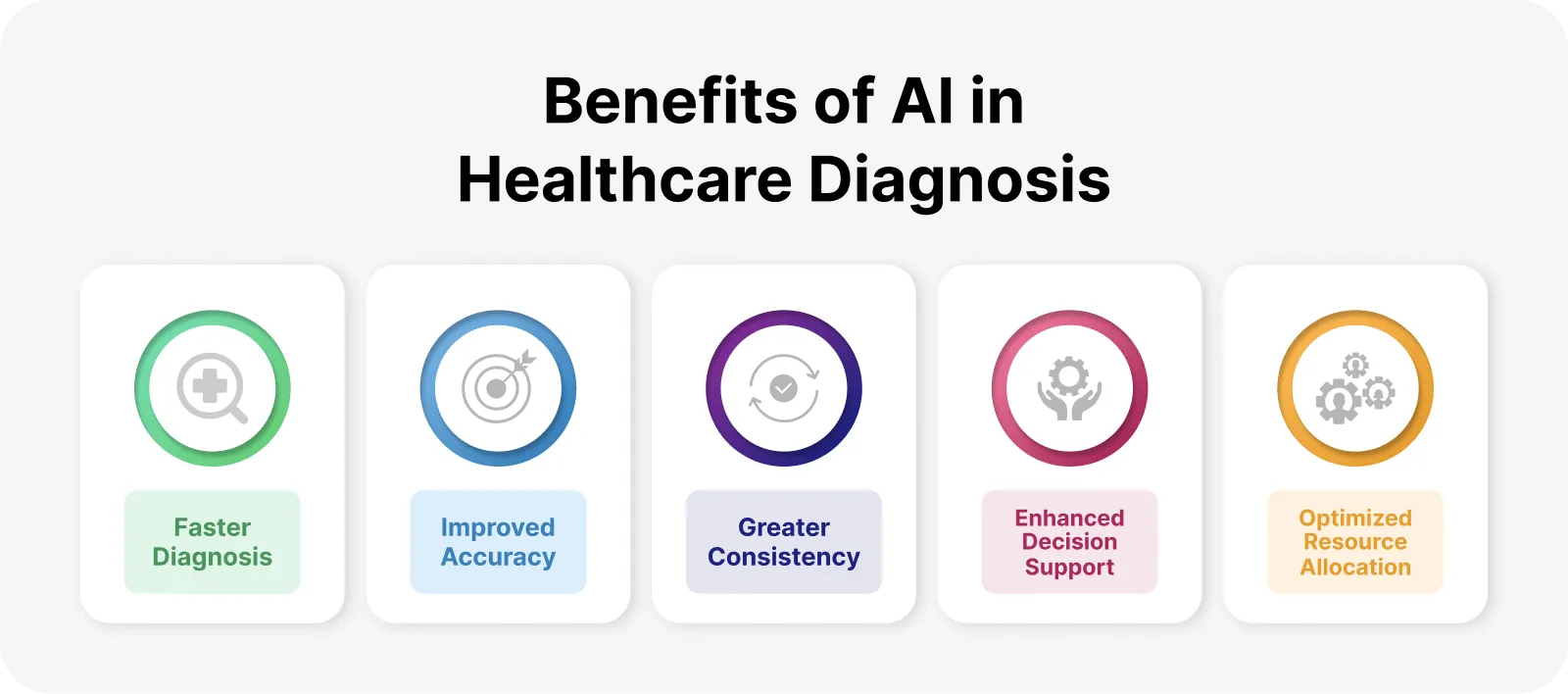What if your next health assessment could be delivered faster, with greater precision, and tailored specifically to your needs? AI diagnosis in healthcare is enabling this, revolutionizing the identification and treatment of conditions, and delivering unparalleled speed and precision in crucial decisions.
However, creating such innovations isn’t just about sophisticated algorithms or advanced tools. It calls for close collaboration between developers, clinical specialists, and those who understand the cultural and human aspects of care. When these perspectives come together, it enhances processes and paves the way for fairer, more equitable access to treatment for everyone.

In this article, we’ll look at how technology is reshaping decision-making in medicine, the obstacles to building inclusive solutions, and the key steps for turning breakthrough ideas into meaningful, real-world change.
The scope of intelligent technology is vast, ranging from forecasting future trends and offering tailored care recommendations to improving the accuracy of identifying complex conditions. Each day, enormous volumes of information are generated, from clinical records and laboratory findings to scan results and wearable device readings, far beyond what any individual could realistically analyze alone.
What sets this technology apart is its capacity to process and learn from such information, uncovering patterns and connections that might elude even the most seasoned experts. This capability enables earlier, more precise evaluations, which can play a pivotal role in achieving better outcomes.
One of the most transformative applications lies in assessments. While conventional approaches often rely on personal interpretation, leaving room for variation, automated systems bring consistency, delivering objective, insight-driven evaluations. As a result, you get more reliable and accurate decision-making.

Advancements are fundamentally changing how medical professionals interpret complex information. By harnessing vast amounts of various statistics, artificial intelligence in healthcare businesses is trained to detect subtle patterns and abnormalities that might otherwise go unnoticed.
This process relies on sophisticated learning algorithms that enable it to continuously improve its understanding and assist clinicians in making more informed decisions. Let’s explore how AI in healthcare diagnosis learns from records to support accurate assessment.

Radiology relies heavily on interpreting complex medical images to identify diseases. AI diagnosis healthcare utilizes deep learning models trained on thousands of annotated images to recognize patterns and abnormalities with remarkable precision. These models are capable of identifying subtle indicators, like tiny lung nodules or early stroke signs, that manual review might overlook.
By automating the initial analysis, it reduces the workload of experts and accelerates diagnosis. This allows specialists to focus on cases requiring expert judgment while improving overall accuracy.
Here are some practical examples of using technology to detect a wide range of conditions
Google Health developed advanced chatbot development services capable of analyzing low-dose CT scans with a higher accuracy rate than seasoned personnel. The tool significantly reduces false positives and false negatives, meaning it can better distinguish between malignant and benign nodules.
This improves early detection of lung cancer, often a challenging task, and enables clinicians to begin treatment sooner, when it’s most effective. The ability to process vast amounts of statistics quickly also reduces the burden on radiology departments.
Viz.ai's FDA-cleared software transforms stroke care by real-time analysis of CT scans, promptly notifying on-call neurologists of any detected stroke signs. Time is critical in treating strokes, and this technology helps reduce the time from scan to treatment decision.
By rapidly identifying large vessel occlusions and notifying specialists within minutes, the tool supports faster intervention, which can drastically reduce long-term disability and improve survival rates.
Aidoc’s suite of tools scans emergency images to flag acute conditions like fractures, hemorrhages, and intracranial bleeds. Professionals receive these alerts prior to their review, enabling them to prioritize the most urgent cases.
This functionality is especially beneficial in overcrowded emergency departments, where faster identification of serious conditions can lead to immediate action and better outcomes.
IBM Watson Health’s tools for mammogram analysis assist specialists by highlighting areas of concern on mammography scans, acting as a second pair of eyes. These tools improve the detection of early-stage tumors and reduce the number of false alarms, which lowers the rate of unnecessary biopsies.
By improving both sensitivity and specificity in breast cancer screening, this technology helps build greater confidence in assessment and reduces customer anxiety.
During the pandemic, systems worldwide were overwhelmed. Institutions like Mount Sinai Health System deployed tools to detect pneumonia associated with COVID-19 from chest scans. These systems could quickly triage patients and monitor disease progression.
This initiative focuses on supporting frontline clinicians and assisting hospitals in managing high patient volumes more effectively.

Imagine a future where your treatment is designed specifically for you, shaped by your unique needs and circumstances. That future is already taking shape as advanced technologies transform the way decisions are made and solutions are developed. Artificial intelligence diagnosis in healthcare brings greater precision to care, speeds up the creation of new therapies, and works hand-in-hand with professionals to amplify their expertise. In this section, we’ll look at how these breakthroughs are redefining what’s possible and moving us closer to truly personalized solutions.
One of the most powerful forces shaping personalized care today is the seamless integration of intelligent tools with electronic records, creating a unified and detailed picture of each individual’s medical history, diagnostic results, and other essential information.
By carefully examining this extensive resource, AI in long-term care for your business is capable of uncovering subtle patterns and emerging risk factors that might remain hidden through traditional review alone, enabling you to access timely, insight-driven guidance that supports informed decision-making.
This approach strengthens the ability to pinpoint individuals who may face elevated risks at an earlier stage, allowing for proactive interventions that can significantly influence outcomes and ensure a more precise, tailored course of care.
Beyond shaping analysis and guiding treatment strategies, intelligent technologies are redefining the way new medicines come to life by harnessing machine learning platforms. These platforms are capable of exploring vast and varied datasets, from intricate genomic sequences to complex chemical structures, with remarkable speed and precision.
This ability to uncover promising drug candidates tailored to specific patient groups is transforming the pace and efficiency of pharmaceutical research, enabling breakthroughs that once took years to be achieved in a fraction of the time and with reduced costs.
The progress in oncology is particularly noteworthy for those seeking truly individualized care solutions, as these innovations are enabling highly targeted therapies that have the potential to transform the outcomes for numerous patients.
Importantly, these technologies serve to enhance rather than replace the expertise of medical professionals. They enable radiologists to accelerate and refine their analyses.
Dermatologists are empowered to achieve greater diagnostic precision through collaboration with advanced healthcare software consulting. Surveys indicate that a significant majority of experts in the pharmaceutical and life sciences sectors are already leveraging these innovations.
They use them to streamline and strengthen drug discovery efforts. This creates a powerful synergy where the accuracy and efficiency of technology converge with the critical judgment and experience of clinicians. Ultimately, this partnership propels personalized medicine to unprecedented levels of effectiveness and impact.

The use of advanced technologies is transforming how medical experts detect and address diseases, bringing improvements in both speed and quality of care.
Adoption of AI healthcare diagnosis has grown significantly, with a recent survey revealing that 78% of organizations now incorporate them in at least one business area, up from 72% earlier in 2024 and just 55% the year before. With this rapid growth in mind, below are the key advantages of integrating such innovations into medical practice.
When specialists are involved or large volumes of information require review, traditional processes can take hours or even days to complete. AI for patient engagement can rapidly analyze complex medical inputs such as lab results or clinical notes, delivering insights in a matter of seconds. In urgent care settings, timely decisions can significantly impact patient outcomes.
One of the most compelling advantages of automated tools is their ability to detect patterns and irregularities that are so intricate or subtle that even highly trained specialists might miss them. These systems persistently expand their capabilities by learning from extensive medical knowledge and diverse real-world cases.
This continuous learning helps sharpen their precision over time, reducing the likelihood of oversights or misinterpretations. As a result, these tools enable earlier and more effective interventions. This, in turn, helps mitigate the risks associated with delayed, insufficient, or inappropriate treatment.
When medical assessments rely only on human interpretation, results can vary depending on a clinician’s experience, focus, workload, or even the time of day. In contrast, automated tools uphold consistent standards, applying the same careful criteria regardless of circumstances.
This consistency improves the reliability of evaluations across different practitioners, locations, and care settings, while also promoting fairer and more trustworthy outcomes for everyone involved.
These technologies are not designed to replace medical professionals but to support them. AI medical diagnosis tools act as a powerful second opinion, helping to confirm findings or highlight possibilities that might not have been considered. This collaborative approach allows for more informed clinical decisions, especially in complex or ambiguous cases.
With increasing pressure on custom cloud-based healthcare solutions and professionals, efficient use of time and resources is critical. Healthcare AI diagnosis can help prioritize cases based on urgency, automate routine tasks like screening, and flag anomalies that need further review. This ensures that medical teams can focus their attention where it’s needed most, improving workflow and reducing burnout.

Advanced technologies promise significant improvements in medicine, but their successful implementation requires addressing significant challenges. According to a Crunchbase report, startups attracted over $7.5 billion in funding, with investments already nearing $1.68 billion by the end of February 2025.
These hurdles range from the quality of information used for training systems to ethical and practical issues involved in real-world clinical settings. Understanding these challenges is essential to harnessing the full potential of automated tools while ensuring accuracy, fairness, and trust.
Overall, automated technologies have already transformed medicine by improving accuracy and speeding up detection across many fields. Their ability to identify early disease signs and personalize treatment offers real potential to save lives and enhance outcomes.
As these tools continue to advance, collaboration between clinicians, technologists, and regulators will be vital to ensure ethical use and build trust. Equipping professionals to work alongside these technologies will maximize their impact.
In the end, combining human expertise with powerful tools creates a future where care is faster, smarter, and more personalized while keeping the essential human touch at the center of medicine.


Our newsletter is packed with valuable insights, exclusive offers, and helpful resources that can help you grow your business and achieve your goals.